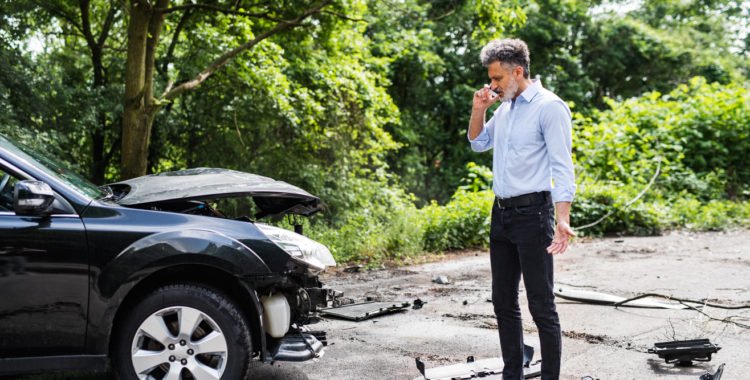The Burden of Proof In a West Virginia Personal Injury Case
Whether negotiating a claim with an insurance company or preparing your case for a jury trial, an important consideration is the burden of proof. The burden of proof is the level of evidence that must be presented to prove your case.In criminal cases, the burden of proof is beyond a reasonable doubt. Reasonable doubt is the highest burden of proof in our court system. It requires doubt based upon reason and common sense. It is doubt that would make a reasonable person hesitate to act. In criminal cases, it is the government’s burden to prove its case beyond a reasonable doubt.In personal injury cases, the burden of proof belongs to the plaintiff, or injured person, who is seeking a recovery based upon the wrongful conduct of another. In a personal injury case, the burden of proof is a preponderance of the evidence.
The Burden of Proof: Preponderance of the Evidence
A plaintiff must prove his or her case by a preponderance of the evidence. This is the burden of proof in a personal injury case. Preponderance of the evidence simply means the greater weight of the evidence. If the scale tips slightly in the plaintiff’s favor, then the plaintiff met his or her burden of proof. If the evidence is equal, the plaintiff has not met his or her burden of proof.In the typical personal injury case, a plaintiff must present evidence of a breach of a duty, causation (or proximate cause), and damages. These are the basic elements of negligence. The plaintiff must prove each of these elements by a preponderance of the evidence.
Breach of a Duty of Reasonable Care
The initial issue of duty is for a court to decide. A court will determine whether a legal duty exists. If the court finds that a duty exists, then it is the plaintiff’s obligation to prove that the person did not act with reasonable care or breached his or her duty. If no duty to act with care exists, then the personal injury case cannot go forward. If a court finds a duty, it will be the jury’s obligation to determine whether the wrongful conduct breached the duty.If a person does something that a reasonably careful person would not do in a situation, then the person breached his or her duty of reasonable care. Relatedly, if a person fails to do something that a reasonably careful person would do, then the person breached his or her duty of due care.Take, for example, running a red light. Every driver has an obligation to operate his or her vehicle in a reasonably safe manner. By operating a vehicle, the law provides that a duty exists. This duty includes an obligation to obey traffic laws. If a driver runs a red light, the driver breached his or her duty of reasonable care (and violated safe-driving laws). Under these circumstances, it will be the plaintiff’s burden to prove that the driver actually ran the red light by a preponderance of the evidence.After establishing breach of a duty of care, the plaintiff must next prove proximate cause.
Proving Causation in Personal Injury Cases
A plaintiff must prove proximate cause by a preponderance of the evidence. This is the plaintiff’s burden of proof in a personal injury or car wreck case. Proximate cause simply means that the wrongful conduct of the defendant caused injury to the plaintiff. A wrongful act is the proximate cause of injuries and damages if, in the natural sequence of things, the conduct brought about the injury and the injury would not have happened without the conduct.Going back to the example where the driver ran the red light, if the driver/defendant ran the red light and collided with the side of the plaintiff’s car, it can be said that the defendant’s conduct caused the damages and injuries the plaintiff sustained. But for the defendant running the red light, the plaintiff’s car would not be totaled. But for the defendant running the red light, the plaintiff would not have sustained a head injury and would have continued about his or her day.
Proving Damages in Personal Injury Cases
It the plaintiff’s burden to prove damages by a preponderance of the evidence. The plaintiff must prove that the damages were actually caused by the conduct of the defendant. The purpose of damages is to compensate a person who has been injured or harmed. Speculative damages cannot be recovered.In order to recover for physical injuries due to another party’s negligence, meeting the burden of proof often requires that the plaintiff’s physician be called to testify that the physical injuries sustained by the plaintiff were cause by the wrongful conduct of another. In the red-light situation discussed above, the plaintiff would call his or her treating physician to testify that the head injury was caused by the vehicle accident.Damages for loses such as medical bills and the cost of automobile repair can be proven by submitting the medical bills and the cost of repair into evidence. Similarly, lost wages can be proven by the plaintiff testifying about work history and the wages that were lost as a result of physical injuries caused by the defendant’s conduct.There is no set rule for calculating damages involving physical pain, mental anguish, and emotional distress. These amounts are left to the discretion of the jury.
Proving Future Damages
A plaintiff may also recover for damages he or she will incur in the future. To recover damages for future medical expenses, a plaintiff must prove the cost of the treatment he or she is reasonably certain to need in the future. To recover lost future earnings, the plaintiff must prove that reasonably certain earnings will be lost in the future as a result of his or her injury.Finally, a word about preexisting conditions. Going back to red-light example, assume the plaintiff had a preexisting head injury that was made worse by the collision. In this circumstance, it would be the jury’s duty to determine whether the preexisting condition was aggravated or made worse by the defendant’s conduct. If the jury finds it made the condition worse, it could award reasonable compensation for the aggravation of the preexisting condition. Again, it would be the plaintiff’s burden to prove the aggravation by a preponderance the evidence.
Conclusion
Whether you are preparing a case for a jury trial or negotiating a claim with an insurance company, the burden of proof is a critical part of a personal injury case. It dictates the types of evidence that must be presented to a jury in order for a plaintiff to prevail and receive fair compensation for his or her injuries.If you or your loved one has been injured in a car accident, contact your West Virginia personal injury attorney today. Our office is centrally located in Teays Valley between Charleston and Huntington. Call us today at 304-932-8775.

